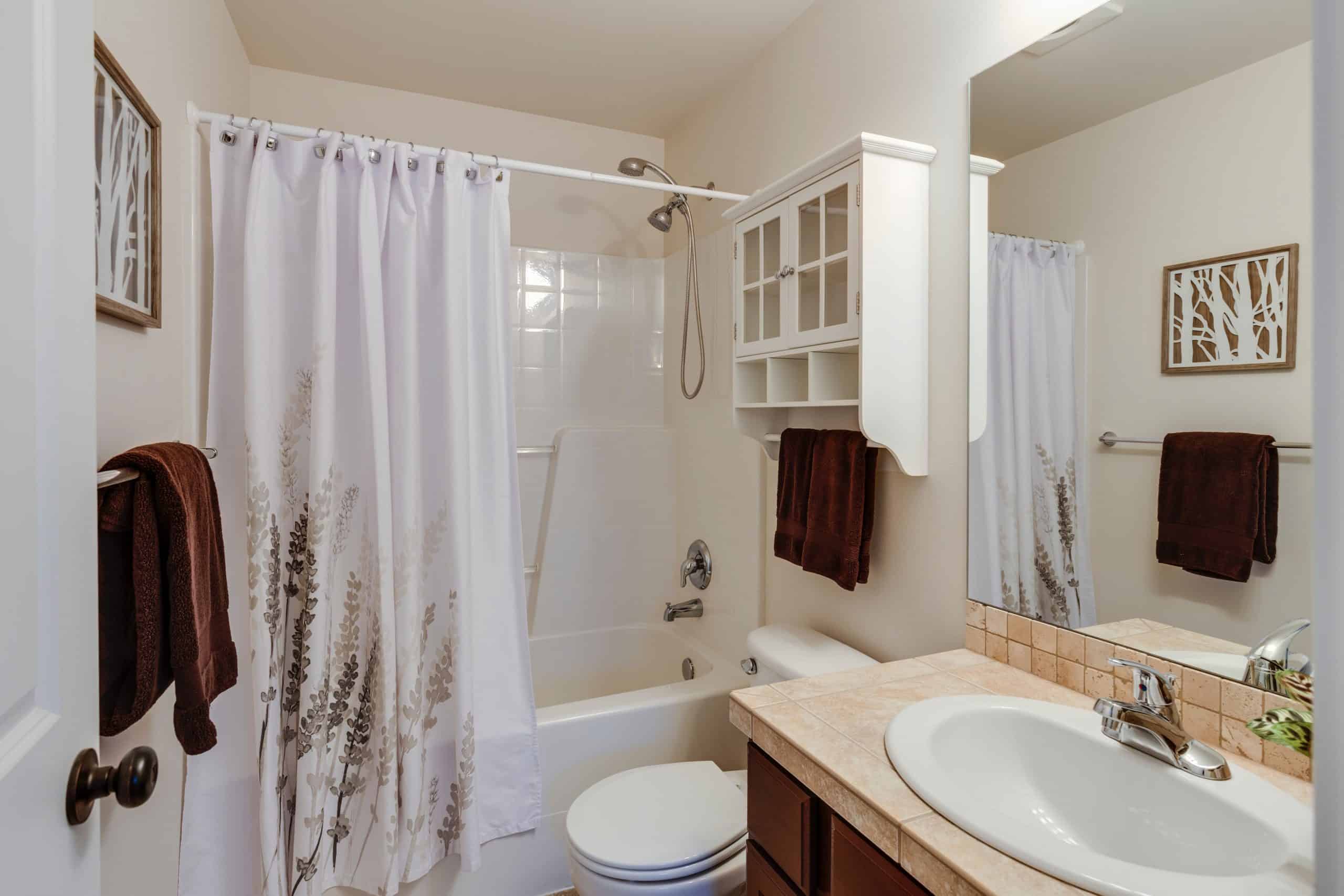Since around 235,000 people are injured in falls sustained in their bathroom each year, it makes sense to focus on enhancing bath safety widely. January is National Bath Safety Month, which is the perfect time to assess and reevaluate how safe your bathroom is- and how you can reduce the risks of falls. As the hazards increase with age, safety for seniors may include bathroom modifications and aids that include shower seats, grab balls, and enhanced lighting.
National Bath Safety Month is in January, is your bathroom as safe as it could be? The CDC (Centers for Disease Control and Prevention) report that around 235,000 people show up at emergency rooms in this country due to injuries from falling in their bathrooms. They also assert that among seniors, one out of every four will experience a nasty fall this year. To be fair, the bathroom is inherently hazardous due to wet surfaces and slick floors particularly for seniors or those with mobility issues. Circumvent the dangers of your bathroom with mobility aids that curb the risks and enhance personal safety.
We take bath safety very seriously- and you should, too. Here are some suggestions that can help make the bathroom a much safer place:
- Invest in and install sensor lights that will illuminate these areas as needed- without the reaching and searching for switches that may precipitate a fall. This is a safety measure for late-night trips to the bathroom.
- Make sure that the fan is working in the bathroom- and consider implementing a timer. When the room is not well ventilated, moisture and condensation may take longer to dry. This could create a slippery surface and hazardous environment, particularly if it goes unnoticed. A timer ensures the fan goes on and off periodically, keeping moisture at-bay.
- Install grab bars throughout the bathroom and exterior areas. These can be subtle and discreet- but still provide a helping hand and sturdy support, as needed. Place them on secure stud-beams near stairs and doorways- as well as close to the tub, toilet, and sink. Grab bars are an inexpensive approach that could be invaluable later-on.
- Do you or your loved ones use an emergency call button system? Why or why not? These are an excellent line of defense for those that live alone- or that live with chronic medical issues or mobility limitations. A button is non-intrusive but there when you need it the most!
- It is a resource that often goes unnoticed, but if you keep an Alexa-abled device in the bathroom, you may be able to simply tell Alexa to ‘call 9-1-1’ if an emergency arises. Isn’t modern technology amazing?
- Make the effort to change and augment the threshold of the bathroom doorway. This is easy enough to do with some transition tape or stripping, but it can make a huge difference for anyone trying to navigate with a cane, walker, or chair into the bathroom. This is easily a DIY project!
- Get rid of throw rugs or runners that could cause a potential fall risk. Instead, use some non-slip bathmats and keep them near the sink and tub, where it could possibly be slick. Use bathtub treads- you know, those textured stickers- to prevent slipping during ADLs, or activities of daily living.
- A shower seat is inexpensive and easy to move around, as needed. These are available widely and provide a sturdy place to sit during showering or bathing, which can decrease the risks of a fall and related injury. These are an invaluable tool for ADLs.
- Make showering as easy as it can be with a hand-held shower head. These allow the user to control where and how they will bathe- rather than be struggling to position themselves under the water and showerhead. This may provide a better sense of balance for some users, which could prevent falls. Some have extra features that further increase ease, such as a pause function that is initiated on the shower head handle.
- Raise the toilet seat to prevent injuries caused when bending, sitting, and rising from the bathroom toilet. Toileting is one of the areas that could prevent individuals from aging in place and staying in their own home, longer. A raised seat simply makes it easier and less straining to do so. Talk to a mobility retailer about options compatible with your bathroom and toilet. These are more affordable than you might think!
- If you decide to go the extra mile and remodel the bathroom with safety in-mind, consider a frameless or walk-in shower system. This can help those with physical limitations get in and out of the shower safely- while also providing a means of access for wheelchairs and walkers, too.
Make your bathroom safer with these suggestions- and with mobility equipment and aids from Pacific Mobility. Create a safer home that improves the overall quality of life for all who live there. Call or visit today!
President, Husband, Father, Grandfather Graduate of UC Davis- Bio Sci Major- Go Aggies! Jeff has extensive experience in all of Pacific Mobility’s products and services, and specializes in accessibility products as well as stairlifts, ceiling lifts and custom wheel chairs. His hobbies include spending time with family, gardening, mountain biking, exercising and off road motorcycle riding.
24 years as Owner/President of Pacific Mobility Center – selling, installing, and servicing stairlifts, porch lifts, ceiling lifts, pool lifts, handicap ramping, specialty wheelchairs, scooters, power wheel chairs, and other power mobility devices
Certified Environmental Access Consultant since 2008
Licensed General Contractor since 1998
Certified Aging in Place Specialist since 2016
Board Member for Home Access Professionals
Member of Association of Members of the Accessibility Equipment Industry (AEMA)




